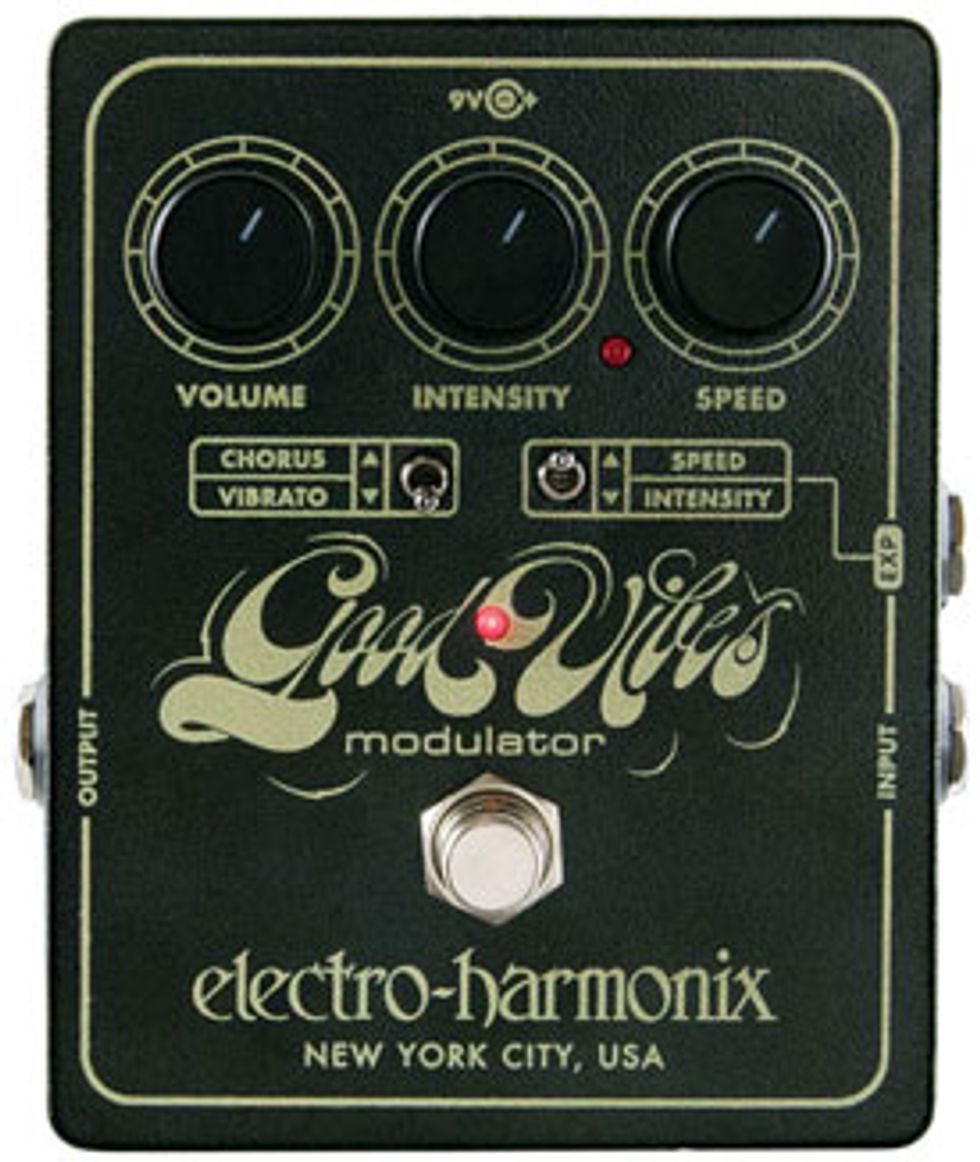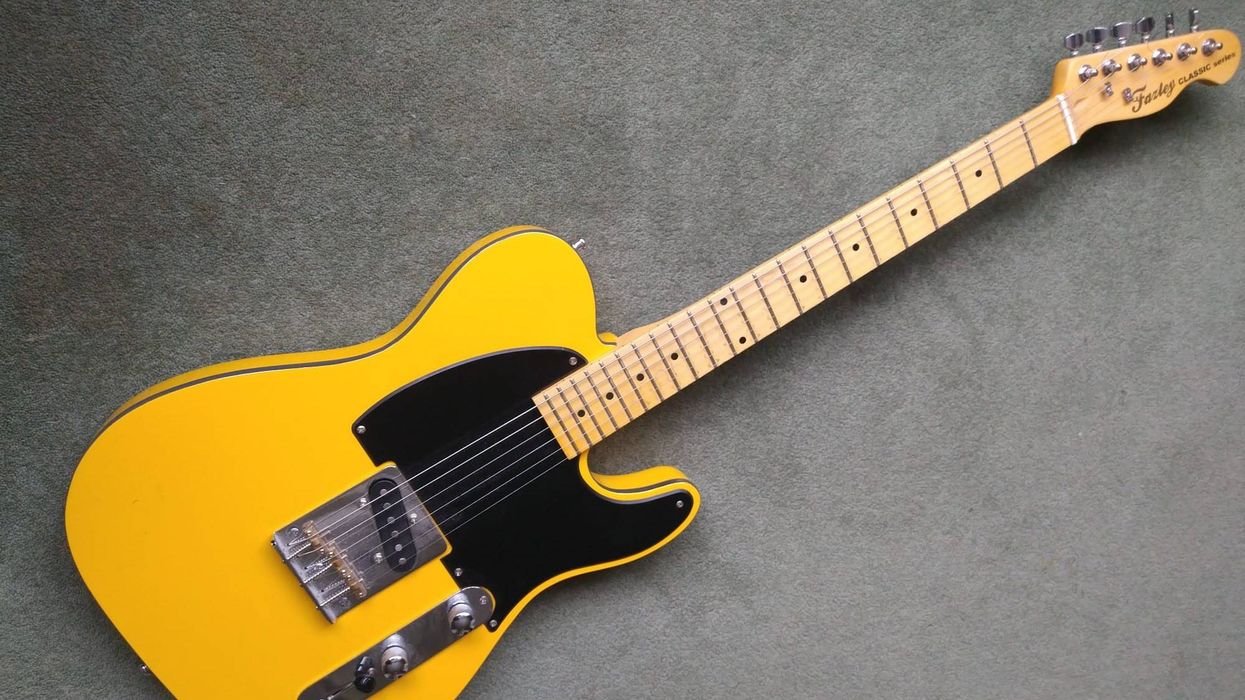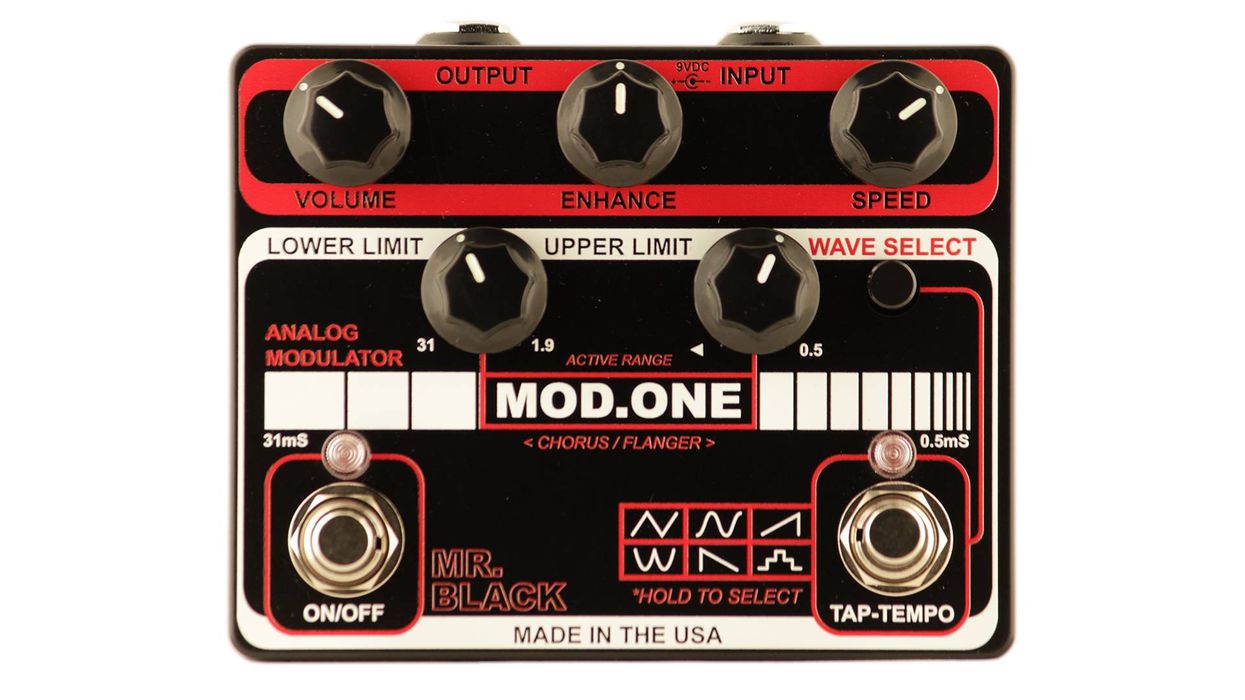
Electro-Harmonix has built some amazing and affordable phasers, flangers, chorus and vibrato pedals over the years. But the Good Vibes is the company’s first accessibly-priced, photocell-driven Uni-Vibe-style modulation pedal.
Like so many great EHX pedals, Good Vibes is designed for probing the outer reaches of an effect’s potential. There’s an expression-pedal jack (why doesn’t every ’Vibe-inspired pedal have one?), and the switch for assigning it to speed or intensity is right there with the volume, intensity, speed, and chorus/vibrato controls. That simple design gesture significantly enhances the pedal’s real-world utility and expressive potential.
At lower speed and intensity settings, chorus mode deliciously reveals its EHX modulation pedigree. It’s rich, fat, and smooth sounding—perfect for animating chord arpeggios and bend-heavy fuzz leads. At higher intensity levels, though, it sacrifices some of the soft wave contours that can make an optical circuit so appealing. The upside to these harder-edged modulations is that expression-pedal sweeps between high and low intensity become uncommonly dramatic. With a biting fuzz in the mix and an amplifier with a lot of low end, the effect can be uniquely deep and dizzyingly effective.
Test Gear: Fender Jaguar, DeArmond JetStar, silverface Fender Bassman, blackface Fender Tremolo
Ratings
Pros:
Control layout invites tweaking. Superb expression-pedal functionality. Reasonably priced. Clean, solid construction.
Cons:
High intensity settings have a very on/off, pulsating quality. Vibrato can sound thin at lower settings.
Street:
$137.40
Company
ehx.com







![Rig Rundown: Russian Circles’ Mike Sullivan [2025]](https://www.premierguitar.com/media-library/youtube.jpg?id=62303631&width=1245&height=700&quality=70&coordinates=0%2C0%2C0%2C0)


























